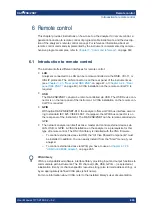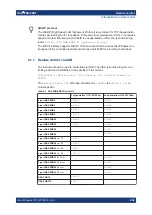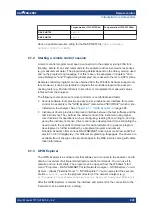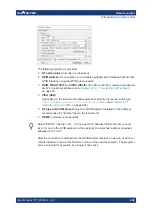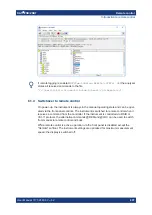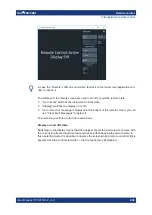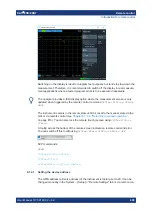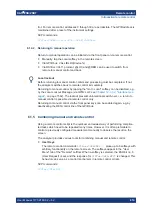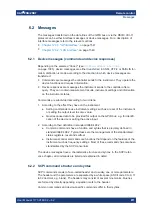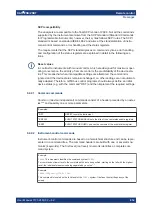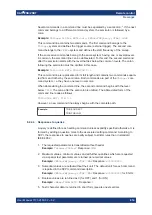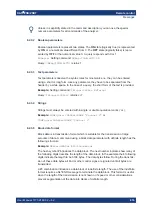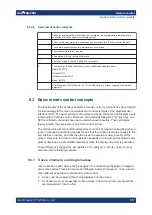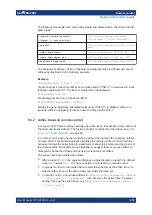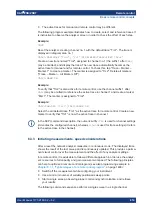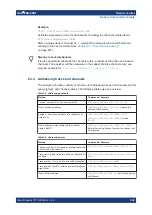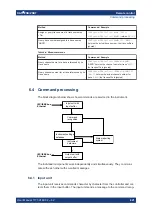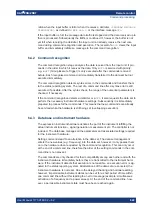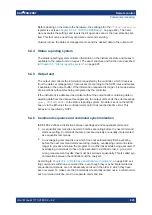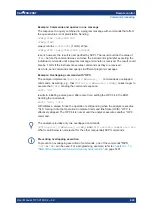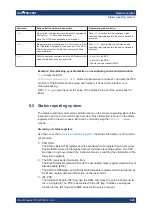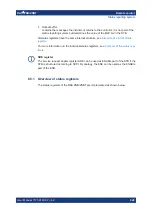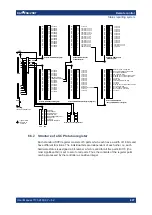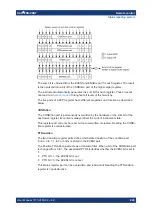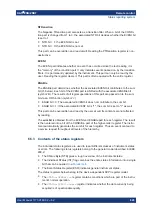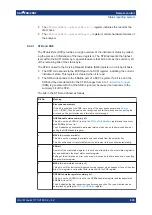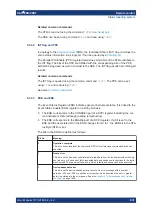
Remote control
R&S
®
ZNB/ZNBT
816
User Manual 1173.9163.02 ─ 62
Unless it is explicitly stated in the command description, you can use the special
numeric parameters for all commands of the analyzer.
6.2.3.2
Boolean parameters
Boolean parameters represent two states. The
ON
state (logically true) is represented
by
ON
or a numerical value different from 0. The
OFF
state (logically false) is repre-
sented by
OFF
or the numerical value 0. A query responds with 0 or 1.
Example:
Setting command:
SWEep:TIME:AUTO ON
Query:
SWEep:TIME:AUTO?
returns 1
6.2.3.3
Text parameters
Text parameters observe the syntax rules for mnemonics, i.e. they can be entered
using a short or long form. Like any parameter, they have to be separated from the
header by a white space. In the case of a query, the short form of the text is provided.
Example:
Setting command:
TRIGger:SOURce EXTernal
Query:
TRIGger:SOURce?
returns
EXT
6.2.3.4
Strings
Strings must always be entered within single or double quotation marks (' or ).
Example:
CONFigure:CHANnel:NAME "Channel 4"
or
CONFigure:CHANnel:NAME 'Channel 4'
6.2.3.5
Block data format
Block data is a transmission format which is suitable for the transmission of large
amounts of data. A command using a block data parameter with definite length has the
following structure:
Example:
HEADer:HEADer #45168xxxxxxxx
The hash symbol # introduces the data block. The next number indicates how many of
the following digits describe the length of the data block. In the example the 4 following
digits indicate the length to be 5168 bytes. The data bytes follow. During the transmis-
sion of these data bytes all End or other control signs are ignored until all bytes are
transmitted.
A #0 combination introduces a data block of indefinite length. The use of the indefinite
format requires a NL^END message to terminate the data block. This format is useful
when the length of the transmission is not known or if speed or other considerations
prevent segmentation of the data into blocks of definite length.
Messages


